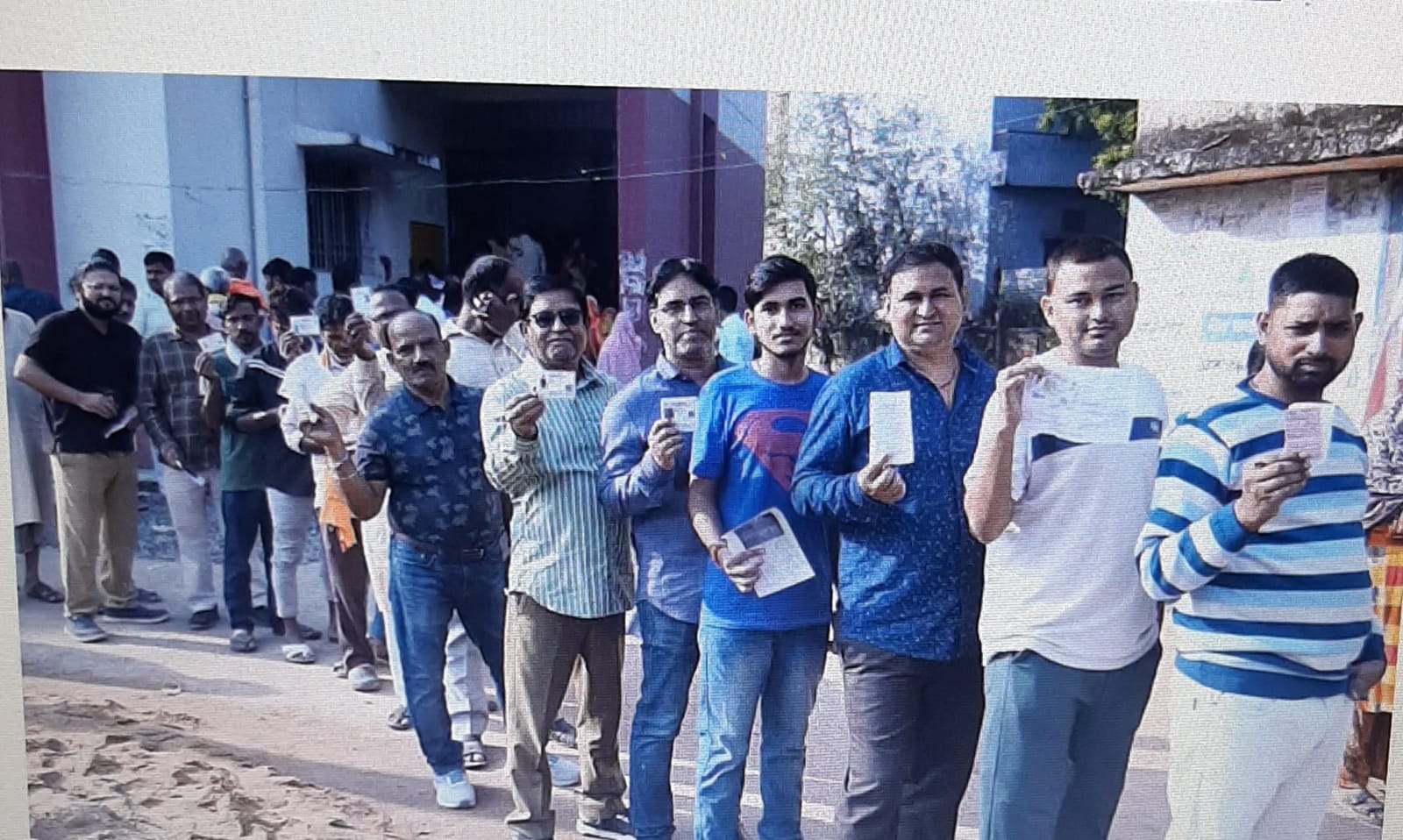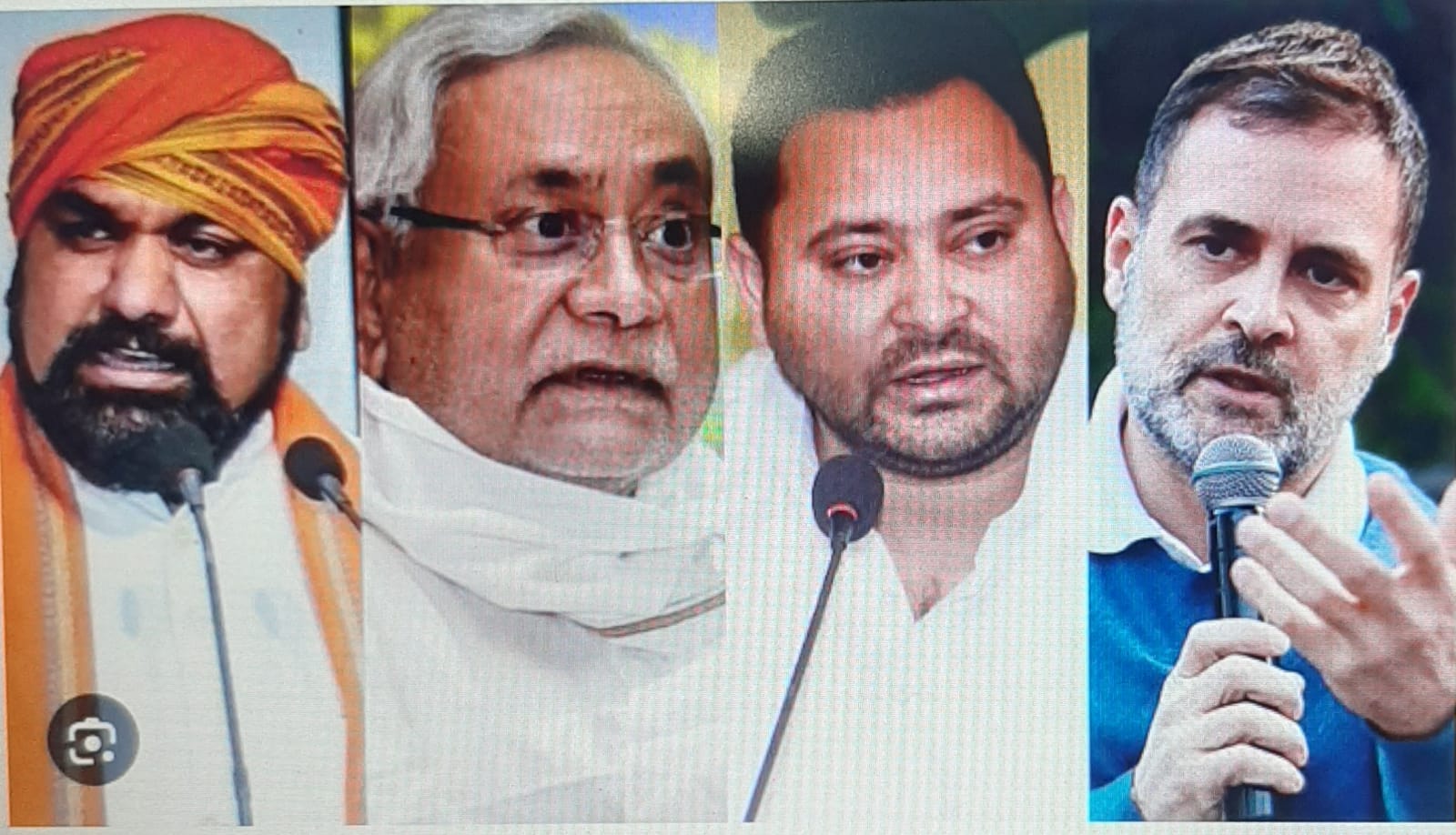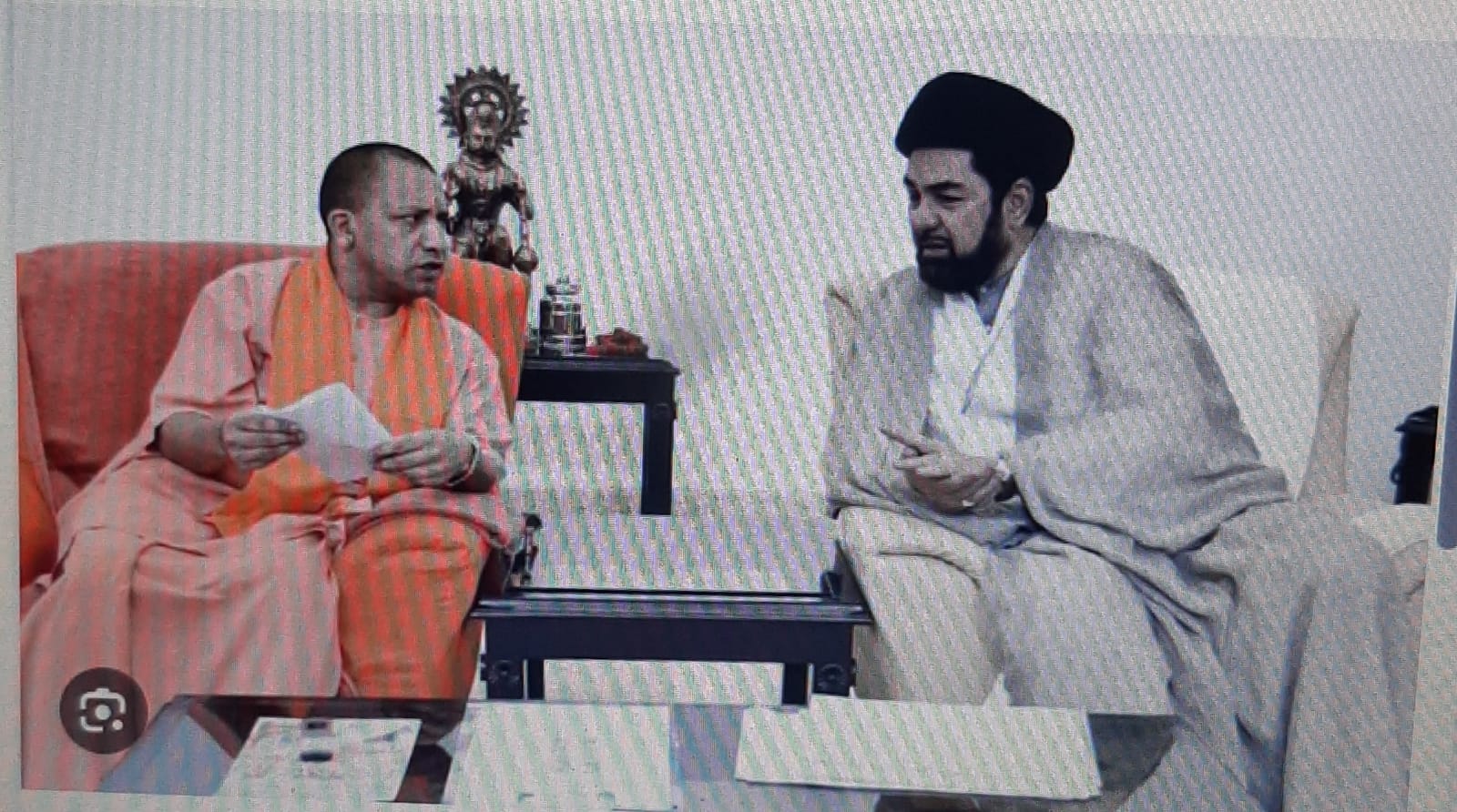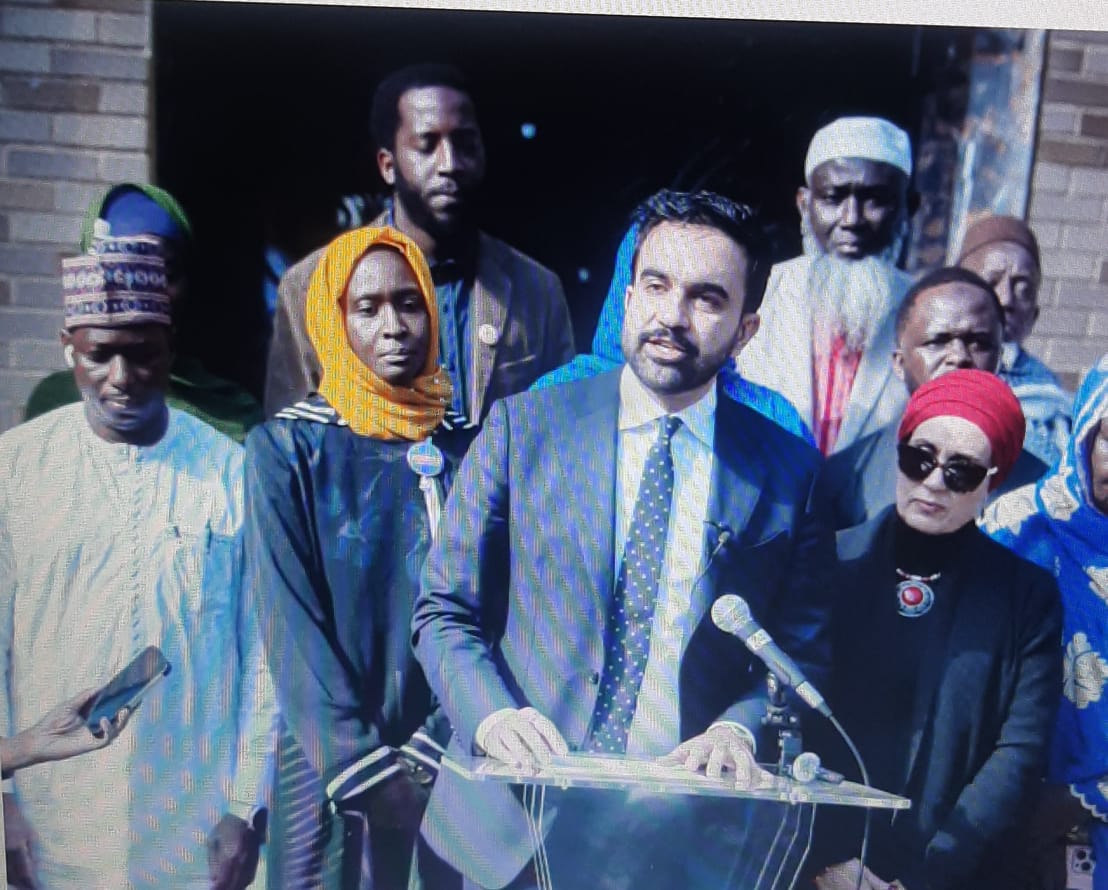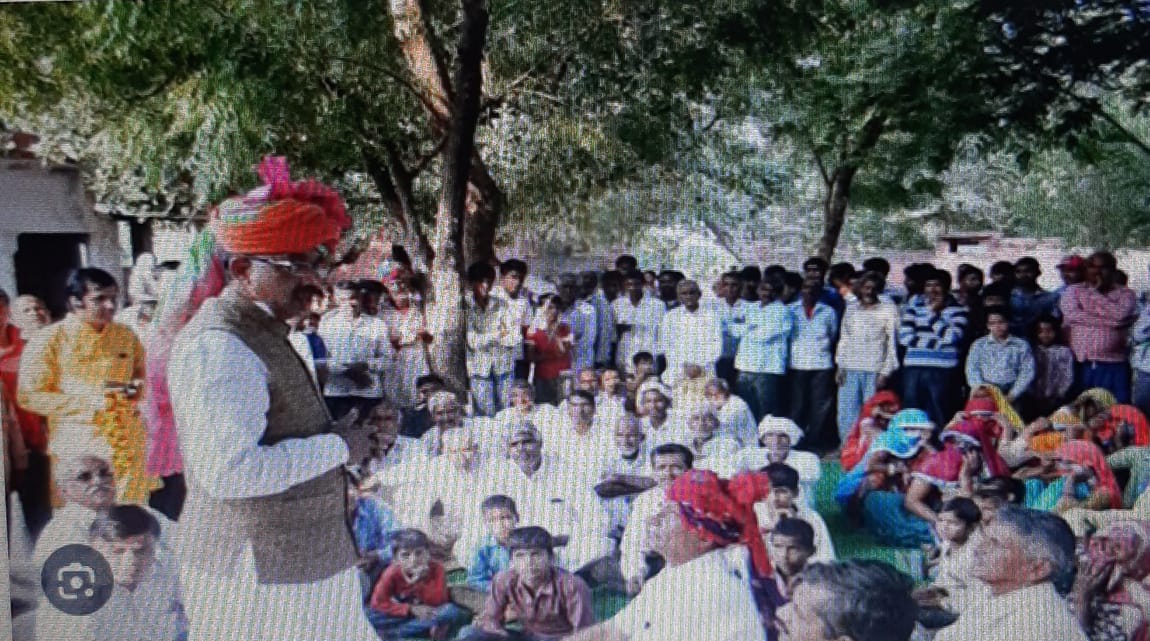
After over 32 years of the historic 73rd Constitution Amendment Act (CAA), the state of local governments (both rural and urban) continue to be a question of whether the glass is more empty or full depending upon the point of view of the author. It is time to ask the question whether all is well with grassroots democracy, writes former IAS officer Sunil Kumar.
Recently, a Status of Devolution to Panchayats in States 2024 report was released by the Ministry of Panchayati Raj, Government of India. It ranked the States based on their performance on the Devolution Index devised by the Indian Institute of Public Administration (IIPA). The Index took into account adherence to constitutional framework, extent of devolution of functions, finances and functionaries, capacity building initiatives and accountability mechanisms put into place by the States. Karnataka, Kerala, Tamil Nadu, Maharashtra and Uttar Pradesh were among the top five States. The first four States have consistently been among the top five States. In the earlier report of 2015, Chhatisgarh was at fifth place.
Surprise inclusion of Uttar Pradesh
While it may appear surprising in the first instance, there were certain developments between the last report prepared in 2015 and the present report (2025) which seem to have tilted the balance in favour of Uttar Pradesh. Despite being the largest State with over one-fifth Gram Panchayats of the entire country (22%), Uttar Pradesh was the first State to board all GPs on the digital Public Finance Management System (PFMS) in the country in 2019-20. Likewise, it constructed over 20,000 well-equipped Gram Panchayat Office Bhawans and undertook a large scale recruitment of Accountants for each GP. While these have been encouraging developments, a lot more remains to be done on several fronts in Uttar Pradesh. There are certain troubling signs emanating from Uttar Pradesh in particular, and many states of north India in general, which seem to have been overlooked. These need to be addressed on priority by all concerned.
Elections essence of Democracy
Free and fair elections constitute the essence of democracy. Local Government elections are most closely contested. In these elections, each vote matters. But it comes almost as an anti-climax if voters suddenly find that not even two candidates have filed nominations. On several Gram Panchayat seats there is just one valid nomination. Hence, the candidate is declared elected unopposed. Sometimes, there are no nominations. In that case, the State Election Commission (SEC) issues a fresh notification and set of dates for election. Incidentally, the Gram Panchayat cannot be constituted and elected members take charge until the Sarpanch/ Pradhan and at least two‑thirds of the members are elected and in office.
State of Grassroots Democracy: Northern States
In this article I will be focusing upon the burning issue relating to ‘absence of candidates’ for election to the post of ward member. Take the case of Uttar Pradesh. Data publicly available on the Uttar Pradesh State Election Commission portal reveals that for 58,176 posts of Pradhan in the last elections held in April 2021, there were as many as 5,42,602 nominations and even after scrutiny and withdrawal, there were 4,53,337[i] candidates left in the fray (about eight candidates per seat). This shows that there was keen electoral contest for the post of Pradhan.
However, the position gets reversed when it comes to election of ward members. In Uttar Pradesh, the number of wards in GPs is 7,32,480 as per 2021 election records. In the last elections, 6,34,465 nominations were filed and after scrutiny and withdrawal, the number of candidates left in the electoral arena were just 6,09,405[ii]. This means that there was not even one candidate per seat in all GPs.
Analysis of 2015 Panchayat election results show that there were 7,44,226 wards in 59062 GPs then. There was electoral contest for only 1,80,167 (24.20%) ward members; a whopping 4,24,670 (57.06%) were declared elected unopposed and there were no candidates in 1,38,905 (18.66%) wards. These figures are very revealing and they tell a different story about the health of grassroots democracy.
The position is no different in some other northern States like Uttarakhand[iii], Madhya Pradesh, Haryana and Rajasthan. In the 2025 ongoing Panchayat elections in Uttarakhand, only 25,587 candidates are contesting for 55,587 posts while 30,752 candidates had contested 55,574 positions in 2019. This 16.8% decline is largely for the post of ward members. Like neighbouring Uttar Pradesh, the post of Pradhan is still well contested.
Publicly available data[iv] reveals that the number of candidates for the post of Panch (ward members) in Madhya Pradesh has shown a declining trend over the years. In no Panchayat election held since 1994, has the average number of candidates crossed one. The highest figure was 0.97 per seat in 1999-00 and 2004-05 elections. It declined sharply from 0.91 (3.32 lakh) in 2009-10 to 0.62 (2.26 lakh) in 2014-16 elections. However, there seems to be no sign of candidate apathy for elections to the post of Sarpanch or member of Block Panchayat / District Panchayat. On the contrary, stories abound about how candidates pour in their own money into development works and leave no stone unturned to impress the voters before Panchayat elections[v].
In the 2022 elections in Madhya Pradesh, about 2.34 lakh out of 3.64 lakh Panchs (64.28%) were elected unopposed while the corresponding figure for Sarpanch was just 690. Likewise in Haryana, a whopping 64.3 percent of the Panchs (38,855) were elected unopposed in the 5th Panchayat General elections held in 2016[vi]. Figures in neighbouring Rajasthan are not too different either. In the 2005 General Elections to Panchayats, 41.41% of Panchs were elected unopposed[vii].
Southern States
The position is not so dismal in the southern and western States which have relatively stronger Gram Panchayats and have fared better on the Devolution Index over the years. This reflects the strength of institutions created in the Panchayats and relatively better standards of service delivery.
In the GP elections held in 2015 in Karnataka, a total of 8687 members (9.51%) were elected unopposed against 91339 sthanas or seats spread across 5728 GPs[viii]. In the 2020 GP elections, 8074 members (9.0%) were elected unopposed[ix]. In Karnataka, the Sarpanch or President of GP is elected by the ward members and not directly by the voters.
In Kerala, unlike most other States, GP elections are contested on party lines. The Left Democratic Front (LDF) and the United Democratic Front (UDF) are the major party groupings. NDA led by the BJP has emerged as the third alliance in recent times. During the last general elections (2020), the LDF won a majority in 54.62% GPs, followed by UDF in 34.11%, NDA in 2.01% and Others in 9.24% GPs. The LDF was victorious in 7262 wards, UDF in 5893 wards, NDA in 1182 wards and others in 1620 wards. Candidates getting elected unopposed in Kerala (even in GP ward elections) is unusual and rare.
As for Tamil Nadu, in 2019 elections, 2.09 lakh nominations had been filed for 76,746 posts of ward members and 18,137 persons were declared elected unopposed by the Tamil Nadu State Election Commission[x]. Likewise, in the GP elections held in 2021 in 9 districts (where it could not be held earlier), 2981 candidates were declared elected unopposed while 79,433 candidates remained in fray for remaining 23,998 posts of ward members. It is estimated that about 20% of ward members were elected unopposed in the last GP elections in Tamil Nadu.
Western State
Unlike most other States, elections to all Gram Panchayats in all districts are not held at the same time in the western State of Maharashtra. Elections to 7682 Gram Panchayats spread across the State was held in December 2022. Against the total 65,916 seats of ward members in these GPs, 14,028 ward members (21.28%) were declared elected unopposed. Elections were held for 7619 posts of Sarpanch and 699 candidates (9.17%) were elected unopposed. Reportedly, 69 Gram Panchayats were constituted unopposed[xi].
Eastern States
The trend of candidates winning elections unopposed is again strongly seen in West Bengal despite elections being contested on party lines as in Kerala and neighbouring Tripura. During the 2018 elections, as many as 34% seats were won by the ruling All India Trinamool Congress (AITC) unopposed as the opposition parties could not put up candidates on these seats. This, however, dropped to 9.5% in the 2023 elections.[xii] AITC secured over 51 percent popular votes and won 80 percent of the Gram Panchayats.
In neighbouring Bihar, the election of ward members sees healthy participation as the average number of contestants for a ward member seat is above four. The post of Mukhiya sees even greater contest as over eight candidates join the electoral fray. The SEC Bihar website has no information about the number of candidates declared elected unopposed. An analysis of news reports pertaining to Phase 1 to 4 of last Panchayat elections showed that just 26 of 1,09,554 elected ward members were confirmed ‘elected unopposed’ candidates. This is negligible in comaprison to neighbouring Uttar Pradesh or West Bengal.
Delay in notification of Gram Panchayats
In States like Uttar Pradesh and Uttarakhand, no nominations are filed for a large number of seats for ward members. Consequently, even when the Pradhan and a few ward members have been declared elected, the GP cannot be constituted as the requisite number of ward members are not in place. The SEC then announces fresh elections for vacant seats. Pradhans scramble to get at least one set of valid nomination papers filed for these vacant seats. These ward members are seen as the Pradhan’s men (puppets) and not as representatives of the voters in the ward. The Pradhan obtains their signatures on paper when required. Neither any authority is delegated by the Pradhan nor demanded by these ward members even if the State Panchayati Raj Act and Rules provide for Standing Committees and envisage active role of elected ward members.
It is thus apparent that ‘candidate apathy’ for the post of ward member is much more common in the Hindi speaking States of north India than the western, southern or eastern States. In West Bengal, it is allegedly ‘political violence’ which deters potential candidates from filing nominations and remaining in the electoral fray.
Is there Voter Apathy?
Different Studies reflect, that so far voter apathy is not noticeable in the rural local government elections. In almost all States, voter turnout in Panchayat elections has been more than those recorded for Vidhan Sabha or Lok Sabha elections. Candidates for local government seats take extra care to ensure that all eligible voters in the Panchayat are included in the electoral rolls including migrant labourers. In several States it is seen that candidates for Sarpanch or Pradhan hire buses/ make train reservations to bring back voters from their place of work to the village on the polling date so that they can cast their vote in the Panchayat elections. Voters too take pains to exercise their voting rights in the local government polls. Thus, there seems to be no sign of ‘voter apathy’ in Panchayat elections but ‘candidate apathy’ is visible aplenty.
Candidate apathy – a disturbing trend
Keeping in view that the ward members constitute almost 86 percent (27.45 lakh) of nearly 3.2 million elected representatives of rural local governments and, if in almost 50 percent seats of ward members spread across the country, candidates are declared ‘elected unopposed’, then that is an ominous signal. It signals weak grassroots democracy and hints at structural or design flaws which generates ‘candidate apathy’.
Response of State Election Commissions (SEC)
In Karnataka, the SEC took note of this ‘unsavoury’ trend in the 2020 Panchayat elections, which could sound the death knell for democracy in rural areas, and directed officials to investigate whether those elected unopposed had used pressure tactics or any other illegal means especially since there were allegation of some seats having been won through auction or use of influence of local politicians to get their candidates elected unopposed. The SEC had even got a case registered in the local police station when, after enquiry, it emerged that 13 members from Sindigeri GP in Bellary had got elected unopposed illegally. Now the SEC in Uttarakhand is promising to undertake a meticulous study to investigate the underlying reasons behind the significant drop in nominations after conclusion of the ongoing round of general Panchayat elections in the State. There is little or no evidence of other SECs taking note of this ‘disturbing’ trend. To quote Shri Anoop Nautiyal, a prominent social activist of Uttarakhand and founder of Social Development for Communities (SDC), “candidate apathy may cause long-term damage to grassroot governance”. Similar sentiments have been echoed by Shri Jot Singh Bisht, political activist and former President, Zila Panchayat in Uttarakhand.[xiii] However, there is no publicly available evidence of SECs in other States taking any action to check candidate apathy.
Possible Explanations
In my view, the possible explanation for this disturbing trend hinges interalia on the quality of governance at local government level, the weak institutional structure and flaws in the electoral system.
Quality of Governance
The quality of governance in Gram Panchayats depends on the constitution and effective functioning of institutions. In a study based on evidence from five districts of Karnataka[xiv], which is among the best performing States, the authors have shown that although provision for meetings of Ward Sabha and Gram Sabha, constitution of Standing Committees and of Gram Panchayat have been made in the Act and Rules, there is evidence to show that their functioning varies from district to district. It has been noted that proper record of meetings are not kept, people are generally not well aware about the meetings of these institutions, people’s participation is low and these have generally failed to act as institutions for promoting responsive and accountable governance. Constitution of Standing Committees of Gram Panchayat, participation of ward members in the meetings of Standing Committees and even the Gram Panchayat displayed variation in different districts. This study was based on data collected for the period 2005 to 2012. There may have been some improvement on these matters in the last decade or so in some States. However, in States, like Uttar Pradesh, Uttarakhand, Madhya Pradesh there is no provision for organizing meetings of Ward Sabha. Even institutions like Gram Sabha remain very weak in most States. So good governance remains a distant dream for ordinary citizens.
Weak Institutional Structure: Concentration of power
In this scenario, one reason for ‘candidate apathy’ could be that potential candidates do not see any worthwhile role for themselves as Ward Members in the Gram Panchayats. In several States (more so in the northern States) GP has become synonymous with the Pradhan / Sarpanch & the Panchayat Secretary. All power is concentrated in the Pradhan/Secretary duo. Meetings of Gram Panchayat are perfunctory and ward members serve as ‘yes men’ to the Pradhan. The concentration of powers in the Pradhan/Sarpanch appears more pronounced in States where they are elected directly although many stakeholders in States with indirect elections feel that direct elections to GP President is preferable.[xv]
Dysfunctional Standing Committees
The Standing Committee system provided for in the State Panchayati Raj Acts is functional mostly on paper. If the situation left immense scope for improvement even in a State like Karnataka, then one can visualize how dysfunctional it would be in a State like Uttar Pradesh or Uttarakhand. With no clarity about their role and functions, the ward members do not feel they are an ‘essential’ part of the executive in the Gram Panchayat. A Study released by the Ministry of Panchayati Raj in 2008[xvi] showed that as much as 28 percent of elected representatives were not even aware of the existence of different types of Standing Committees at the Gram Panchayat level, while 18 percent said that no such committee existed.
Ineffective Accountability Mechanisms
The Gram Sabha, the Ward Sabha & provision for Social Audit are institutional mechanisms for ensuring responsive and accountable governance in rural local governments. The meetings of Gram Sabha is presided over by the Pradhan/Sarpanch and he has a decisive say in not only finalizing the agenda but also conducting the meetings of the Gram Sabha. Role of ward members in these meetings is negligible. The provision for organizing meetings of Ward Sabha, where ward members could play a significant role, either does not exist in the Acts and Rules of most States, especially of the north, or those meetings are hardly held. The provision for organizing meetings of Ward Sabha exist in Kerala, Karnataka, Bihar, West Bengal and a few other States. The ward members play a leading role in organizing these Ward Sabhas. In Bihar, funds are also distributed ward-wise and a committee under the chairmanship of the concerned ward member oversees the expenditure.
Difference in remuneration of Ward Members & Sarpanch
In a recent paper[xvii] it has been shown that there is a wide gulf in the remuneration of elected representatives of rural local governments vis a vis MLAs and MPs. This chasm extends to the honorarium paid to Sarpanch/Pradhan and the Ward Members too in all States. In Uttar Pradesh, while a Pradhan receives Rs.5000 per month, a Ward Member receives Rs.1200 per annum (just Rs.100 per month). In Madhya Pradesh, the Sarpanch receives Rs.4250 per month while the Ward Member just Rs.1800 per annum (Rs.150 per month). In Bihar the corresponding figures are Rs.800 per month for Ward Member and Rs.5000 per month for the Mukhiya. It is in Kerala alone that the President of GP receives Rs.13,200 per month and the Ward Member Rs.7000 per month. With this level of remuneration, it comes as no surprise that there is dearth of candidates especially in the northern States. There is no value attached to the time and effort that a ward member needs to put into his role as an elected representative. There is urgent need to rationalize this anomalous situation.
Electoral Malpractices
In a recent workshop organized in Dehradoon, one got an opportunity to hear voices from the grassroots. Dr. Yogamber Negi, a former Zila Panchayat member, Rudraprayag mentioned that today the voice of the people has been throttled by the system. To quote, “aaj jan par tantra haawi hai”. Money, liquor and sand mafia are calling the shots and it has become impossible for genuine grassroot workers to contest Panchayat election at any level. Constitutional bodies like the SECs cannot turn a blind eye to free play of electoral malpractices in local government elections.
It is also seen that the role of ward members has become considerably insignificant where Pradhan/Sarpanch are elected directly like in UP, Uttarakhand or MP. However, despite Mukhiya being directly elected in Bihar, there has been an uptick in electoral contest for ward members as the State provided for ward-wise distribution of funds for development and the ward member was allocated a role in supervising and monitoring development works. However, whether there is a causal link between direct elections and concentration of power in the Pradhan/Sarpanch is an area which needs further research.
System of Reservation & Rotation of seats
The working of the Panchayati Raj system over last three decades shows that the existing system of reservation and rotation of seats every five years in most States acts as a big roadblock in the way of capacity building and expertise of elected representatives and puts a severe strain on the limited capacity of the training institutions and agencies in the States. ERs feel that by the time they begin to understand the working of the local governments, their role and responsibilities and the style of functioning of bureaucracy in local governments, they find that they are nearing the end of their tenures. Reservation and rotation of seats ensure that most elected representatives have to either vacate their seats and make way for new candidates or put up proxy candidates. While MLAs and MPs can serve for several terms, in local governments almost 90 percent ERs are single term elected representatives. This arrangement too deters good governance in local governments. Several ERs feel that the system of capacity building should be strengthened and their term should commence only after they have been imparted training and have developed a good understanding of the working of local governments.
Push for Samras Panchayats
In some States like Madhya Pradesh, Gujarat, Andhra Pradesh and even Maharashtra, the State has pushed for establishment of Samras Panchayats by announcing cash incentives for GPs ranging between Rs.3 lakh to Rs.20 lakh if all elected representatives are elected unanimously. Different States have different incentive slabs. According to a news report,[xviii] in July 2025, Rs.35 crore was disbursed to 761 ‘samras Gram Panchayats’ in Gujarat. Government of Madhya Pradesh too has a scheme on similar lines. This scheme is aimed at reducing electoral tension and fostering community unity in the village. However, without democratic participation, genuine accountability and inclusiveness, it may end up perpetuating the existing power imbalance in the GP and not improving governance. The impact of this scheme still remains minimal even in those States where it has been introduced.
Way Forward
Based on the experience of relatively better performing States, it is evident that governance should occupy the centre stage in local governments. If politics is divorced from governance, then institutions for ensuring responsiveness and accountability as well as participation of citizens will continue to remain weak and dysfunctional. Concentration of administrative and financial power serves to weaken grassroots democracy. Beginning with candidate apathy the malaise could soon extend to voter apathy and that would sound the death knell of democracy and democratic institutions.
In this scenario, the following steps could be taken to arrest the disturbing trend of candidate apathy in local government elections.
Improve Public & Self Perception of Ward Members
First, there is urgent need to improve the public perception and self-perception of ward members who form the bulwark of elected local government representatives. They should be seen as useful and effective elected representatives with real role in providing good governance to citizens.
Re-examine State Panchayati Raj Acts & Rules
Second, the State Acts and Rules need to be closely examined and ensured that suitable provisions for strengthening democratic institutions are inserted. These would call for re-examination of provisions relating to Gram Sabha, Ward Sabha, Standing Committees of GP and clear delineation of the role of ward members and Sarpanch as elected representatives.
Activate Standing Committees & introduce concept of collective responsibility
Third, the statutory Standing Committees of the GP need to be activated. Ward Members should be heading some of these Committees. The Pradhan/Sarpanch could head the Finance & Planning Committee while others could be chaired by different Ward Members selected by the Pradhan/Sarpanch. The principle of collective responsibility should be introduced in the GP wherein the Pradhan/Sarpanch and ward members are collectively responsible to the Gram Sabha.
Make Ward Members responsible for functioning of the GP office
Fourth, since the GP Office is the most important office as far as citizens are concerned for accessing services and redressal of their grievances, ward members could, in turns, be made responsible for ensuring timely and effective functioning of the GP office. This would reduce the workload on the Pradhan/Sarpanch and improve the public perception of the ward members.
Improve the Remuneration of Ward Members & Sarpanch
Fifth, there is urgent need to improve the remuneration of ward members and sarpanch. It has been suggested that the minimum salary due to any elected ward member should be at least Rs.12,000 per month @ Rs. 400 per day and of the Pradhan/ President and Up Pradhan/Vice President should be Rs.30,000 and Rs.18,000 per month respectively. This would render respectability to the posts of these elected representatives.
Accountability Mechanisms in Gram Sabha & Ward Sabha
Sixth, introduction of the Question Hour in the meetings of the Gram Sabha and the Ward Sabha wherein replies to questions put by members in advance are furnished by the respective Chairpersons of the Standing Committees and the Sarpanch based on inputs provided by the GP & department officials would go a long way in making the bureaucracy accord due respect and importance to these institutions which ensure accountability of local government to the citizens.
Relook at election & electoral processes
Seventh, there is need to take a fresh look at the election and electoral processes. Reservation and rotation of seats should be made part of the delimitation exercise to be undertaken by an independent Delimitation Commission after each decadal census. This would ensure minimum two terms to an elected representative. Role of money and mafia in local government elections must be curbed. These electoral reforms would encourage good candidates to contest the local government elections.
Recognize Local Government as the first tier of Government
Eighth, State Governments need to recognize local government as the first tier of government since it is closest to the citizens and best suited to provide civic services and solve their day to day problems. Transfer of funds, functions and functionaries would then happen naturally. This would also mean redefining the role of departments and department officers at the GP, Block and District level. It would also mean releasing the local government elected representatives from the clutches of the bureaucracy.
Finally, it must be remembered that no country can become ‘developed’ without having strong and effective local governments. Good governance can be provided to citizens only when local governments are empowered in every sense of the term. The health of grassroots democracy needs to be carefully monitored and nurtured. Candidate apathy should not extend to voter apathy as that would sound the death knell of democracy in the country. The over three million strong pool of elected representatives (largest in the world) is Indian democracy’s biggest asset. The strength of the energy unleashed as and when ward members assume leadership role in local governments could be way beyond our expectations. It is time to focus on and develop the leadership ability of Ward Members and not just the Sarpanch/Pradhan alone.
(Sunil Kumar is a member of Pune International Centre and a former civil servant. Views expressed are personal.)
[i] Source: Uttar Pradesh State Election Commission portal; https://sec.up.nic.in/site/PRINominationStats2021.aspx
[ii] Ibid
[iii] Sharp Dip in Uttarakhand Panchayat Poll Candidates; The New Indian Express, 12 July, 2025; https://www.newindianexpress.com/nation/2025/Jul/12/sharp-dip-in-uttarakhand-panchayat-poll-candidates
[iv] Panchayat Chunav ek nazar mein; https://www.mplocalelection.mp.gov.in/Data/rightpanel/PANCHAYAT%20ELECTION%20EK%20NAZAR%20MAY.pdf
[v] Candidates in Madhya Pradesh Panchayat Elections pour their own money into development works- Mohammad Asif Siddiqui, 8 July, 2022; https://101reporters.com/article/politics/Candidates_in_Madhya_Pradesh_Panchayat_elections_pour_their_own_money_into_development_works
[vi] Report on General Elections to the Panchayati Raj Institutions in Haryana 2016 by State Election Commission, Haryana; Pg.194
[vii] Statistical Book of Gram Panchayat Gerneral Election, 2005 by State Election Commission, Rajasthan; pg.55; https://www.yumpu.com/xx/document/read/28848420/statistical-book-of-gram-panchayat-general-election-2005
[viii] GP elections: 8,687 members to be elected unopposed; The Hindu, May 27, 2015 06:10 pm IST – Bengaluru: https://www.thehindu.com/news/cities/bangalore/gp-elections-8687-members-to-be-elected-unopposed/article7251692.ece
[ix] https://economictimes.indiatimes.com/news/politics-and-nation/karnataka-gram-panchayat-election-results-2020-live-news/liveblog/80019745.cms?from=mdr
[x] Over 18,000 elected unopposed to local bodies; The Hindu, December 22, 2019, Chennai; https://www.thehindu.com/news/national/tamil-nadu/over-18000-elected-unopposed-to-local-bodies/article30369928.ece
[xi] BJP claims big win in Maharashtra gram panchayat polls, MVA says it will be clear today; Times of India, December 21, 2022, Mumbai; https://timesofindia.indiatimes.com/city/mumbai/bjp-claims-big-win-in-maharashtra-gram-panchayats-polls-mva-says-it-will-be-clear-today/articleshow/96382380.cms
[xii] 9.5% of West Bengal panchayat seats uncontested, down from 34%; Hindustan Times, Jun 23, 2023; https://www.hindustantimes.com/india-news/west-bengal-panchayat-elections-9-5-seats-won-uncontested-tmc-leads-bjp-contests-in-north-bengal-101687462383042.html
[xiii] Address by Shri Jot Singh Bisht on 19th July, 2025 during the session – Voices from the Grassroots in course of two day National Workshop on Decentralisation and Devolution in Uttarakhand post 73rd &74th Amendments orgainzed by Doon University.
[xiv] Quality of Governance in Gram Panchayats: Evidence from Karnataka by D. Rajasekhar, M. Devendra Babu and R. Manjula; Journal of Rural Development, Vol. 37, No. 4, October – December : 2018; pp. 603-620; NIRDPR, Hyderabad.
[xv] Direct Vs Indirect Election to Gram Panchayata President: Reflections and Implications by N. Sivanna, Nayanatara Nayak, Narayan Billava and V. T. Hungund; Journal of Rural Development , Vol. 36 No. (2) pp. 255-268, NIRD&PR, Hyderabad.
[xvi] Chapter 5, Quality of Participation of Elected Representatives, p.107; Study on EWRs in Panchayati Raj Institutions, 2008; Ministry of Panchayati Raj
[xvii]Reflections on Remuneration of Elected Representatives by Sunil Kumar, 10.04.2025; https://dailynewsandviews.in/language/en/reflections-on-remuneration-of-elected-representatives-local-bodies-grossly-neglected/
[xviii] Gujarat’s Samras model: Unopposed 761 Panchayats get Rs 3-13 lakh each; Down to Earth, 28 July, 2025; https://www.downtoearth.org.in/governance/gujarats-samras-model-unopposed-761-panchayats-get-rs-3-13-lakh-each



